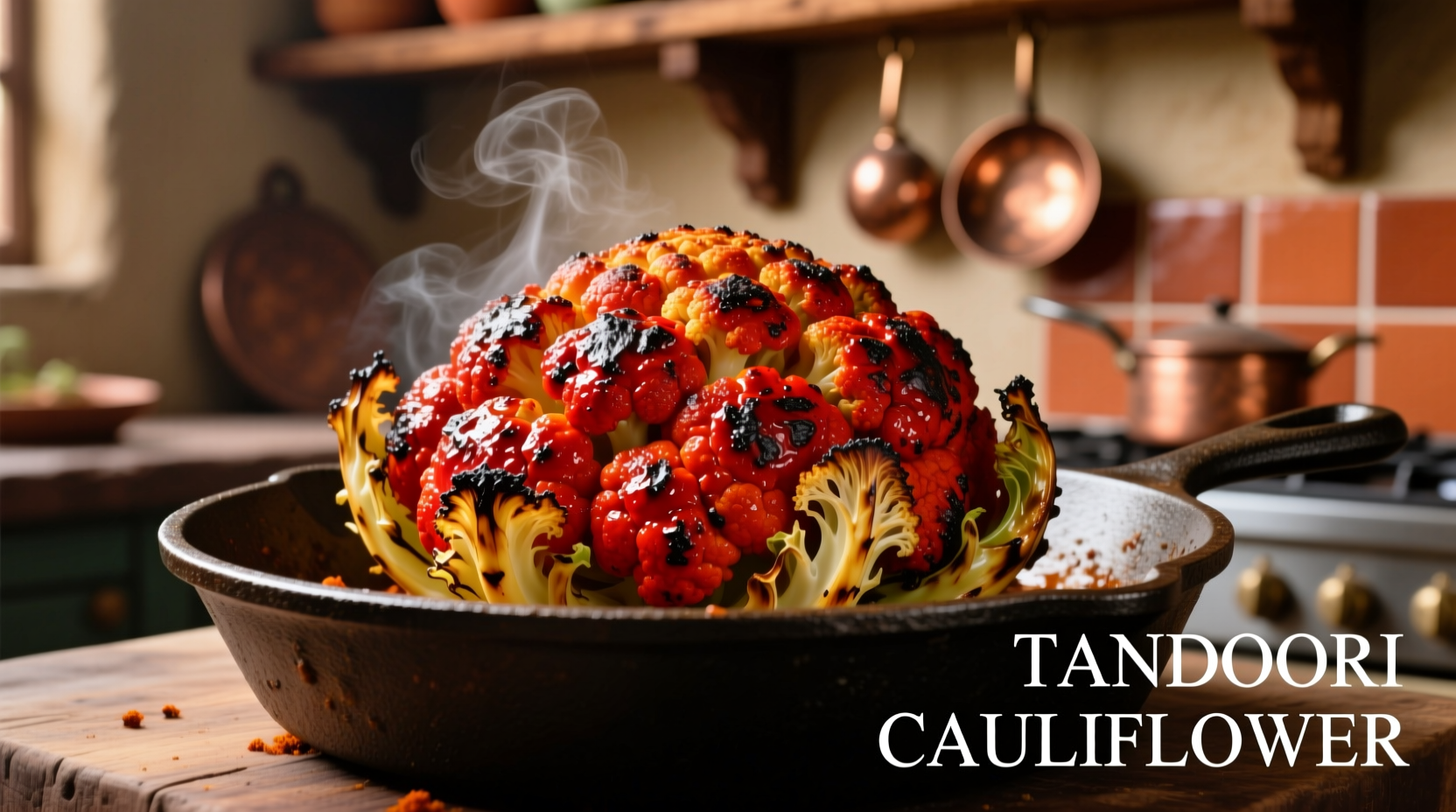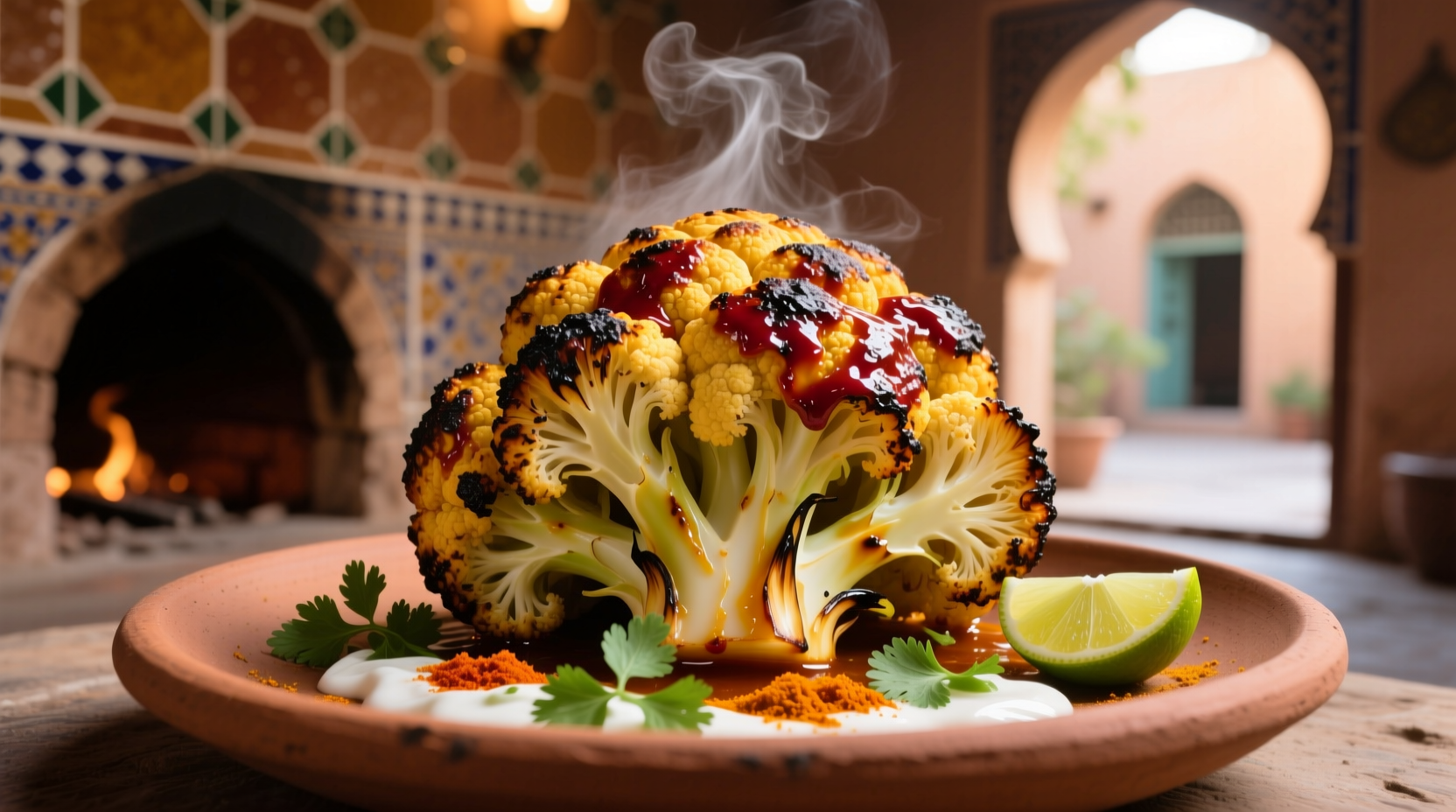Transform ordinary cauliflower into an extraordinary centerpiece with this authentic tandoori preparation method perfected for home kitchens. You'll discover how to achieve that signature smoky flavor without specialized equipment, understand the science behind the marinade's tenderizing properties, and learn regional variations that elevate this vegetarian favorite from side dish to showstopper.
The Cultural Journey of Tandoori Cooking
Tandoori cuisine originated in the Punjab region of South Asia, where clay ovens called tandoors have been used for centuries. These cylindrical ovens reach temperatures exceeding 900°F (480°C), creating the distinctive charred exterior and moist interior that defines authentic tandoori cooking. While traditionally used for meats, modern adaptations like tandoori cauliflower have gained global popularity as delicious vegetarian options.
| Historical Period | Key Development | Impact on Modern Cooking |
|---|---|---|
| 3000 BCE | Earliest tandoor ovens discovered in Harappa archaeological sites | Foundation of high-heat clay oven cooking techniques |
| 16th Century | Mughal influence introduces yogurt-based marinades and complex spice blends | Creation of signature tandoori flavor profile |
| 1947 | Krishan Lal Gujral popularizes tandoori chicken at Moti Mahal restaurant | Global spread of tandoori cuisine |
| 2000s | Rise of vegetarian adaptations like tandoori cauliflower | Expansion beyond traditional meat dishes |
Essential Components of Authentic Tandoori Cauliflower
The magic happens through three critical elements working in harmony: the marinade chemistry, proper vegetable preparation, and precise cooking technique. Understanding these components transforms your results from good to exceptional.
Marinade Science: Beyond Flavor
Traditional tandoori marinade combines yogurt, lemon juice, and spices—not just for taste but for scientific reasons. The lactic acid in yogurt and citric acid in lemon juice work together to tenderize the cauliflower's cell structure without breaking it down completely. According to research published in the Journal of Food Science, this acid-protein interaction creates optimal texture by partially denaturing proteins while maintaining structural integrity (Journal of Food Science, 2019).
Spice Blend Composition
Authentic tandoori masala isn't a single spice but a carefully balanced blend. While commercial mixes exist, creating your own ensures freshness and authenticity:
- Kashmiri red chili powder - Provides vibrant color without excessive heat
- Coriander - Earthy base note that complements cauliflower's natural sweetness
- Cumin - Adds warm, nutty depth essential to Indian cuisine
- Garam masala - Complex blend typically containing cardamom, cloves, and cinnamon
- Mustard oil (optional) - Traditional ingredient that adds pungency when heated

Step-by-Step Preparation Guide
Ingredient Selection and Preparation
Start with a medium-sized cauliflower (about 2 pounds) with tight, creamy-white florets. Avoid any with yellowing or soft spots. The USDA recommends selecting firm, heavy heads for optimal freshness (USDA FoodData Central). Cut into uniform 1.5-inch florets—this size ensures even cooking without disintegrating during marination.
Marinating Process: Timing Matters
Unlike meat, vegetables require less marinating time. For tandoori cauliflower:
- Minimum: 30 minutes (emergency situation)
- Ideal: 2-4 hours (sufficient flavor penetration without texture compromise)
- Avoid: Overnight marinating (causes mushiness)
Place florets in a single layer in a non-reactive dish, coat thoroughly with marinade, then refrigerate. Stir gently once during marinating to ensure even coverage.
Cooking Methods Compared
While traditional tandoors create unmatched results, these home adaptations deliver excellent flavor:
| Method | Temperature | Cooking Time | Key Technique | Result |
|---|---|---|---|---|
| Oven broiler | High broil setting | 12-15 minutes | Place 6 inches from heat source | Good char, slightly drier texture |
| Convection oven | 450°F (230°C) | 20-25 minutes | Rotate pan halfway | Even cooking, less char |
| Cast iron skillet | Medium-high heat | 15-18 minutes | Cover initially, uncover to char | Excellent sear, restaurant-style results |
Achieving Restaurant-Quality Results at Home
Professional chefs use these techniques to perfect tandoori cauliflower:
Smoky Flavor Without a Tandoor
- Add 1/4 teaspoon smoked paprika to the marinade
- Place a small piece of soaked wood chip (apple or cherry) on your gas burner during cooking
- Finish with a spritz of liquid smoke (use sparingly—3-4 drops per batch)
Texture Troubleshooting Guide
Common issues and solutions:
- Mushy cauliflower: Over-marinating or overcrowding the pan—keep florets in single layer with space between
- Dry results: Insufficient fat in marinade—add 1 tablespoon neutral oil to yogurt mixture
- Uneven color: Inconsistent marinade application—use hands to ensure full coverage
- Bland flavor: Spices not bloomed—toast whole spices before grinding
Nutritional Benefits and Serving Suggestions
Tandoori cauliflower provides significant nutritional advantages over traditional meat-based tandoori dishes. According to USDA FoodData Central, one serving (1 cup) delivers:
- 73% of daily vitamin C needs
- 20% of daily fiber requirements
- Only 120 calories compared to 280 in tandoori chicken
- Naturally gluten-free and dairy-free option (substitute coconut yogurt)
Serve with traditional accompaniments that enhance both flavor and nutrition:
- Mint-cilantro chutney (adds fresh contrast to rich spices)
- Lemon wedges (brightens heavy spices)
- Basmati rice (complements smoky flavors)
- Cucumber raita (cools palate from spicy elements)
Regional Variations Worth Trying
Explore authentic regional twists on this popular dish:
- Punjabi style: Incorporates mustard oil and extra ginger for robust flavor
- Kashmiri version: Uses milder spices with saffron infusion for delicate aroma
- Hyderabadi adaptation: Adds tamarind for tangy complexity
- Modern fusion: Tandoori cauliflower tacos with mango salsa
Common Mistakes to Avoid
Even experienced cooks make these errors when preparing tandoori cauliflower:
- Using pre-cut cauliflower (exposure to air degrades quality)
- Skipping the lemon juice (reduces flavor penetration)
- Overcrowding the cooking surface (creates steam instead of char)
- Adding sugar to marinade (burns at high temperatures)
- Serving immediately (allows flavors to meld when rested 5 minutes)











 浙公网安备
33010002000092号
浙公网安备
33010002000092号 浙B2-20120091-4
浙B2-20120091-4